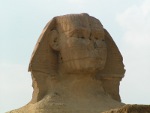A Look at Egyptian Architecture
Author: John Published Under: History

One of the biggest mysteries and wonders in the world is Egyptian Architecture. One of the reasons Egyptian Architecture, and for that matter the Egyptian Culture, was able to develop was the country was for the most part free from invaders and war for about 3 thousand years, while also being ruled in a very organized manner.
Ultimately the Nile River would have one of the biggest impacts on the Egyptians. When the river rose, it would allow the valleys to bloom and flourish, so the Egyptians would focus on producing enough food to last them through the next dry spell. The dry spell usually lasted about five months at a time, with the pharaohs and rulers making the most out of their labor during these periods of "down time."
It was during this figurative "down time" that the pharaohs would have their laborers work on massive monuments, which would ultimately become the pyramids, with the first pyramid being designed by Imhotep, who is also considered the first architect.
It is not just a modern concept to be fascinated by the wonders of the Egyptian Pyramids, but this is something that has amazed mankind for centuries. The Romans were particularly interested, as have been countless other architects and adventurers.
Key Components of Egyptian Architecture
One of the main characteristics common among Egyptian Architecture is incredibly large stone structures. From actual statues and faces, large walls, and of course the pyramids, these large stone creations can be seen in many aspects of their design.
Often, the influence of the gods can be seen in these structures, with many taking the shape of the Egyptian Gods, animals, and other iconic elements.
Sphinxes are one common theme, which are creatures that have the head of a ram, or sometimes a human, and the body of a lion.
Large Entryway Statues were also common, often in the shape of the pharaohs, which in many ways showed the power, or perhaps arrogance, felt by the pharaohs over the common man.
Papyrus Capitals, which are columns based on the papyrus plant, were also used. Another capital, the Lotus Bud Capital, was based off of plant life, which was another common theme.
The Tomb of Khufu
Khufu was a pharaoh who ruled Egypt during 2589 – 66BCE. Unfortunately tomb robbers have since raided his resting place, but it is believed that it took 20 years to construct his pyramid at Giza.
His pyramid is the largest ever built and had, at one time, stood almost 500 feet high. It was made of over two million huge stones, which each weighed about 2.5 tons. Inside there were three rooms, but since grave robbers got their first, their contents will never truly be known.
Queen Hatshepsut's Tomb
The tomb of Queen Hatshepsut is not a pyramid, but instead a long temple that sits against a mountain. Her tomb is actually dug into the mountain face and was designed from an architect named Senmut. The temple was designed with three levels and had many statues made in the queens image.